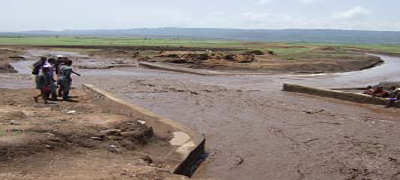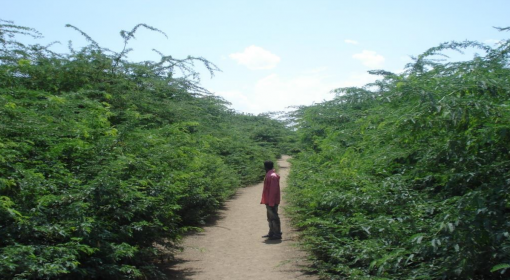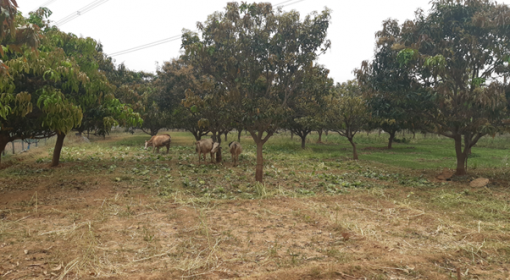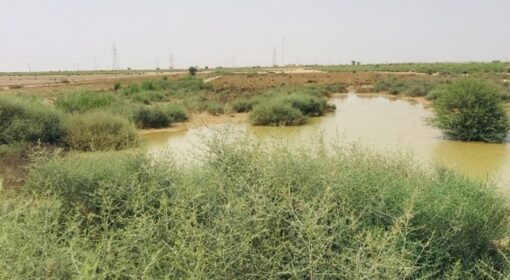by Elly Yaluk and Loes van der Pluijm
December 08, 2017
In just three days in Turkana, of which I spent only one and a half days in the field, I was dazed by the expansive and flat land the people of Turkana are endowed with. Spate rivers famously known as lagha (known as wadi in other parts of the world) run through the land making it a place with high potential to develop the most productive spate irrigation systems in Kenya.
The people of Turkana are predominantly pastoralist but a high number of the population is converting to an agro-pastoral lifestyle thanks to the recurrent and lengthy droughts that have led to serious food insecurity, livestock deaths, and severe hunger. With an increasing population and hostile pastoralist neigbours, fierce conflicts erupt exacerbated by an increased demand for livestock pasture. Huge loses of life and livestock is the order of the day for Turkana people during these conflicts. These life-threatening events have pushed a huge portion of the population into agriculture, fishing, gold mining and other low-return economic activities. Begging, homelessness and destitution are common among those who have lost their loved ones and their livestock-the only source of livelihood.
For decades the people of Turkana endured hardships without being provided sustainable livelihood alternatives. The Government of Kenya (GoK) through the Department of Land Reclamation (DLR) and support from World Food Programme (WFP) initiated Turkana Rehabilitation Programme (TRP) in the early 80s to reclaim degraded lands through construction of water harvesting structures (Trapezoidal bunds) and micro catchments where people could cultivate crops and feed their families. This programme only utilized harvesting of rain water within the bunds mainly for cultivation of sorghum – the main food crop for the Turkana people. TRP became a big success story in Turkana, with its foot prints in almost every corner of the expansive land. This was the testimony of the farmers’ group leaders from Kobuin, Loima, Kakuma and Lokichogio who were invited to the Flood-Based Livelihoods Network (FBLN) stakeholders meeting at Lodwar. They all echoed that they have seen and tasted the fruits of the programme activities; as they harvested their crops and enjoyed their meals with their families. Thus, there was finally light at the end of the tunnel for the Turkana people.
Turkana receives the least amount of rain in Kenya. It also receives the highest volumes of floods. All these years the people working and living in the land were blind to the worth of the huge floods flowing through the lagas emptying the precious commodity (water) into the nearby Lake Turkana. This is the land all rivers in the North Western part of Kenya flow into. River Turkwel, River Kerio and River Muruny including rivers from the hills in Eastern Uganda all flow into Lake Turkana passing through expansive dry and flat areas.
The main objective of the FBLN mission in Turkana was to create awareness among the stakeholders and the farmers’ leaders that Kenya is now a member of the larger FBLN family. This network is where lessons and experiences can be learned and shared from other countries that have for many years depended on floods as an asset to enhance their livelihoods. Turkana people stand to benefit a lot from this. One of the participants Mr. Timothy, who works with TRP, appreciated the fact that Turkana County can feed itself and also feed her hungry neigbours with the surplus they can produce under spate irrigation. He recalled that he and other four officers were sponsored by GIZ to attend a course on spate irrigation at Mekelle University, Ethiopia. They were amazed as they realized how much potential their land had in terms of addressing food security issues only if the spate irrigation potential is realised. His sentiments were echoed by the County government and GIZ representative who are now working together to pilot a spate irrigation system at Kobuin; an area identified to be of high potential.
During the final day of the field trip fortunately there were rains in Turkana. We encountered first-hand the magnitude and the effects of Turkana floods after our 4×4 land cruiser vehicle got stuck in an area notorious for its floods (Nadapal, near Lodwar town). This opened our eyes to the potential of harnessing these floods through for example initiatives to use harvest water off roads; which will prevent flood damage and erosion, enhance groundwater recharge, produce food and make the roads more effective.



